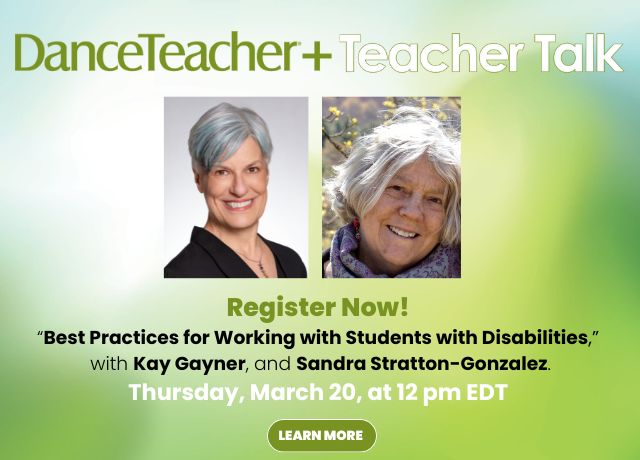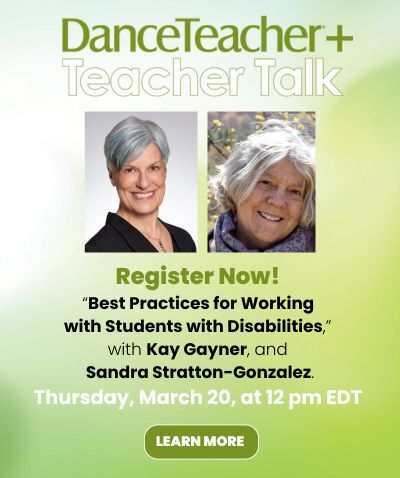A self-described 4-year-old at heart, Maria Hanley has a knack for understanding the mind-sets of young dancers. During the rare moment when she isn’t teaching one of her 20 weekly creative ballet classes at the New York City Jewish Community Center, you can find her in a toy store browsing for props or in the children’s section of the library, gathering ideas for classroom activities from picture books.
Among her tiny dancers—ages 18 months to 6 years—Hanley says the 3-year-olds are a particular source of inspiration. “They start to make their own shapes and move their bodies in the way they want to, instead of just following along with me,” she says. “I can give more to them, and they can give me more ideas back.”
Though she plays the song “Head, Shoulders, Knees and Toes” as part of her warm-up, Hanley, who earned her master’s degree in dance education from New York University, limits her use of instructional songs. “I try not to use directive music all the time, because then why am I here?” she says. “I try to have the music enhance what I’m doing versus lead it.” She chooses tracks that appeal to young listeners and spark their imaginations, switching between instrumentals and songs with lyrics.
To keep students focused and moving smoothly from one set activity to the next, Hanley often sings instructions instead of speaking them, like “Have a seat, have a seat on the wall,” to the tune of “If You’re Happy and You Know It.” That way, dancers stay engaged with the game instead of scattering. “In this age group the transitions are really important,” she says. “I don’t just say, ‘Stand up.’ I have a way for them to do it.”





